|
You might have noticed a quiet spell here recently. The reason? For the past few years, we’ve been really hard at work developing something new - the Arca-Swiss USA website.
The proverbial ribbon was cut on November 20, 2023, and I've been excited to present the new website and welcome you all. Built on the dependable and secure Shopify platform, our new website provides a streamlined, informational, and resource-filled experience. From our renowned ARCA-SWISS tripod heads, to our F-Line, M-Line, and R-Line view cameras and accessories, the expansive ARCA-SWISS product line-up can now be browsed and purchased online, right from the comfort of wherever you are. But we aren’t stopping at just offering our products online. The website is filled with resources and information in the Learn section to guide you through the use of our products. We'll also be featuring the work of ARCA-SWISS photographers, sharing tech articles, and announcing new products in our News and Features section. For those that stop by here in search of quality gear at a reduced cost, we'll also offer demo and pre-owned equipment on the ARCA-SWISS USA website. The lists can easily be found on our website by searching for "Pre-Owned F-Line", "Pre-Owned R-Line" and "Pre-Owned Lenses" in the search bar. So, check out our new website and explore the products, resources and offerings. I'm looking forward to your visit! Press Release September 15, 2022
ARCA-SWISS continues to innovate and revolutionize the photography world. Today we introduce a new option for three of our tripod heads, providing an essential tool for creating panoramic images. C1 Cube cp, Core 75 Leveler cp and monoball® p1+ cp With a variable interval rotator installed under the top panning quick release, clicPan® tripod heads provide a multi-function solution for both advanced amateurs and professional photographers. Panorama ready Easily switch between free panning mode for a single capture, or adjust on the fly to clicPan® mode. Set up and adjust a clicPan® head to be ready for a panorama efficiently and quickly. Once the camera is leveled using the clicPan® tripod head, our top panning design will ensure level panning without the need to adjust the tripod legs when working on uneven ground. Simple to operate Select one of the panoramic interval positions by rotating the white index mark on the clicPan® adjustment ring, until the index mark is aligned with the chosen interval setting. Ten positions are provided on the lower scale - 40° (9 stops), 30° (12 stops), 24° (15 stops), 20° (18 stops), 15° (24 stops), 12° (30 stops), 10° (36 stops), 7.5° (48 stops), 6° (60 stops) with an “OFF” position for 360° free panning movement. The clicPan® adjustment ring turns in either direction. When rotated, the adjustment ring will stop at each setting position. Once a setting is chosen, the camera will pan in equal increments, providing a tactile and audible “clic” stop at each interval. Simply pan the camera to the next detent and stop. Let any vibration settle, then shoot and move to the next stop. You will feel and hear the audible “clic” at every detent interval. Strong and stable with high performance All three clicPan® heads are capable of handling the greater demands of heavy telephoto lenses or medium and large format cameras. Core 75 Leveler cp and monoball® p1+ cp provide a load capacity of 66 lbs / 30 kg. C1 Cube cp provides a load capacity of 88 lbs / 40 kg. C1 Cube and monoball® p1+ cp offer a friction dial for greater control over heavier loads, or less tension with lighter loads. These choices provide added stability and improved handling with fine adjustments. Minimal and light The clicPan® mechanism is lightweight and low in profile, adding approximately two ounces (60 grams) of weight and 10 mm of height to a standard head. Photographers may now reliably shoot single-row panoramas without extra gear, or create multi-row panoramas using one of our Pan System accessories with a nodal rail. Our panoramic accessories are compact, can be quickly collapsed, and convenient to carry in any photo bag. As with all tripod heads from ARCA-SWISS, clicPan® tripod heads are available with a choice of quick release: monoball®Fix, Classic and flipLock®. Specifications and pricing provided below. C1 Cube cp 8501503.1 - C1 Cube cp Classic $1779 8501500.1 - C1 Cube cp flipLock® $1798 8501505.1 - C1 Cube cp monoball®Fix $1766 Type: geared tripod head Weight: 2.56 lb / 1160 g Load capacity: 88 lbs / 40 kg Dimensions: 121x110x110 mm Base diameter: 60 mm Base mount: 3/8"-16 threaded socket Panning at base: yes, 360° Panning at top: yes, 360° Range of motion: +30/-30° horizontal and vertical Base tilt: 60° Base tilt + vertical tilt: 90° Levels: 2 tubular levels Friction control: yes, in both X and Y axes Feature: self-locking geared movements Feature: panoramic rotator detent options - 40° (9 stops), 30° (12 stops), 24° (15 stops), 20° (18 stops) 15° (24 stops), 12° (30 stops), 10° (36 stops), 7.5° (48 stops), 6° (60 stops) and “OFF” for free rotation Core 75 Leveler cp 860152 - Core 75 Leveler cp Classic $1167 860153 - Core 75 Leveler cp flipLock® $1186 860151 - Core 75 Leveler cp monoball®Fix $1153 Type: geared tripod head Weight: 1.52 lbs / 690 gr Load capacity: 66 lbs / 30 kg Base diameter: Ø 75 mm / Ø 3” Dimensions: 88 x 97 x 75 mm Base mount: 3/8"-16 threaded socket Panning at base: yes, 360° Panning at top: yes, 360° Horizontal tilt: +15/-15° Vertical tilt: +15/-15° Levels: (2) tubular levels Friction control: no Feature: self-locking geared movements Feature: panoramic rotator detent options - 40° (9 stops), 30° (12 stops), 24° (15 stops), 20° (18 stops) 15° (24 stops), 12° (30 stops), 10° (36 stops), 7.5° (48 stops), 6° (60 stops) and “OFF” for free rotation monoball® p1+ cp 801157 - monoball® p1+ cp, Classic $850 801158 - monoball® p1+ cp, flipLock® $869 801156 - monoball® p1+ cp, monoball®Fix $837 Type: ball head Weight: 1.42 lb / 645 gr Load capacity: 66 lbs / 30 kg Base diameter: 59.5 mm Body diameter: 75mm Dimensions: 116 x 90 x 75 mm Base mount: 3/8"-16 threaded socket Panning at base: no Panning at top: yes, 360° Levels: target bubble level on the quick release Friction control: yes Feature: panoramic rotator detent options - 40° (9 stops), 30° (12 stops), 24° (15 stops), 20° (18 stops) 15° (24 stops), 12° (30 stops), 10° (36 stops), 7.5° (48 stops), 6° (60 stops) and “OFF” for free rotation ARCA-SWISS clicPan® tripod heads are in stock and available for order through ARCA-SWISS USA. Press Contact: Rod Klukas [email protected] Rodenstock's supply of Copal shutters ran out in 2019 and Rodenstock has not produced a lens with a Copal shutter option since. During 2019, Rodenstock designed and manufactured a new Aperture-Only (AO) or Aperture-Stop mount and deliveries began in late 2019.
Please note: Rodenstock AO lenses do not provide a sync terminal for strobe lighting. Exposure control and strobe syncing must be controlled by the capture device - a digital back or digital camera. Additionally, using the electronic shutter of a digital back or mirrorless camera may have drawbacks for some photographers with fast moving activity - people, vehicles, etc. in motion or with 1/60s (or higher) flash syncing. The effect is called rolling shutter and is greatest when fast moving subjects pass by close to the camera position. There should be few problems for the technical camera user with landscapes and architecture, or for studio view camera photographers shooting static subjects. Please contact me for more information or to request a price list. The ARCA-SWISS Quick Release is compatible with two types of camera plates and with ARCA-SWISS view camera monorail and/or connecting bracket. Our new style quick release utilizes a dual channel, sometimes called "double dovetail" design. The upper channel mounts ARCA-SWISS Classic width camera plates of 38mm, while the lower channel mounts ARCA-SWISS monoballFix 26mm width camera plates and monorail. The original quick release, now "old style", was designed with a single dovetail channel only. See the diagram below for a visual illustration. Your choice of quick release ARCA-SWISS offers three quick release designs for our tripod heads - Classic, FlipLock®, and monoballFix. Classic has a screw knob that tightens the quick release jaws closed, along with a dual channel dovetail. It is the design that I recommend most often, since it can screw closed to tighten different widths of Arca style camera plates. This is a first choice if you use multiple manufacturer camera plates and L-brackets. FlipLock® provides a lever locking system with a three step unlocking process. FlipLock is very precise as it is matched and adjusted to genuine OEM ARCA-SWISS camera plates. An adjustment will be needed and is essential if using plates or L-brackets from RRS, SmallRig, Markins, etc. FlipLock® is the choice for professional photographers since it is very secure and won't unlock accidentally if caught on a sleeve, strap, cord, etc. FlipLock® includes the dual channel dovetail for ARCA-SWISS camera plates and view camera components. MonoballFix is a compact quick release with minimal design featuring a simple press to lock lever. It is the lightest option in the group with a single channel/dovetail design. It includes two safety pins in the plate channel that prevent your camera slipping through if unlocked while tipped downward.
ARCA-SWISS Monoball Classic System ARCA-SWISS Classic camera plates were originally designed and patented in the 1950s. Using a dovetail width of 38mm, the camera plates were precisely defined and matched the base of the ARCA-SWISS view camera optical bench. To this day, the original ARCA-SWISS dovetail camera plate design has not changed. Third-party manufacturers that offer knock off “Arca Swiss style” copies may not be ARCA-SWISS compatible at all, particularly with our FlipLock® quick release. Adjusted at the ARCA-SWISS factory for original ARCA-SWISS camera plates, FlipLock® will need an adjustment for any third party camera plate or L-bracket, many of which are either too wide, too narrow, or do not have the proper dovetail design, especially those with rounded or beveled edges like RRS. Therefore, I recommend ARCA-SWISS camera plates as the first choice when using an ARCA-SWISS tripod head. For other manufacturer's camera plates, an adjustment in the FlipLock® jaws tension is possible, but I recommend using one brand only, so an adjustment isn't required each time you switch system camera plates. ARCA-SWISS view camera monorail can be mounted directly into the lower channel of our Classic and FlipLock® dual channel quick releases. Additionally, ARCA-SWISS view camera connecting brackets can be mounted into the top channel of Classic and FlipLock® quick releases. ARCA-SWISS MonoballFix System MonoballFix is the ARCA-SWISS modern solution designed for newer compact digital cameras. MonoballFix camera plates are ultralight, compact and multi-functional. MonoballFix camera plates have a dovetail width of 26mm, the same width as ARCA-SWISS monorail. Our view camera monorail or accessories like Macro Table and X-Table can be mounted directly into the monoballFix quick release without a connecting bracket. Monorail will also mount into the lower channel of our Classic and FlipLock® dual channel quick releases. Important - monoballFix camera plates mount in one direction only. The edge with the wider overhanging lip must be installed into the locking mechanism side of the quick release. See the diagram above for a visual illustration. Additional note - monoballFix L-bracket mounting plates are multi-directional. Loosen a screw and the foot can be rotated 90° to become the profile of a Classic camera plate.
More Resources If you are searching for an ARCA-SWISS camera plate or L-bracket, I have posted a camera plate compatibility chart here: Camera Plate System and Information Locate your camera in the left column and look across the table for our recommendations for a Classic plate, monoballFix plate or L-bracket. The full system of plates, L-brackets and other accessories can be downloaded below. ARCA-SWISS Camera Plate Systems
Contact me if you need information about a specific feature you might require. We offer many plates in various designs. While many ARCA-SWISS view cameras are designed with base tilt as a standard feature, Micro-Orbix can be ordered as an additional tilt accessory on ARCA-SWISS F-Line cameras at the time of manufacture. Micro-Orbix is supplied on M-Two, M-Monolith, and F-Line Universalis view cameras as a standard feature. Micro-Orbix movements are perpendicular to the optical axis rather than the monorail. Therefore, focus adjustments occur in the selected plane and are fast and easy to make. When using shift, the rotation point will still be on the same axis. Micro-Orbix will vastly simplify focusing without the back and forth focus and tilt repetition required by traditional base or axis tilt designs. 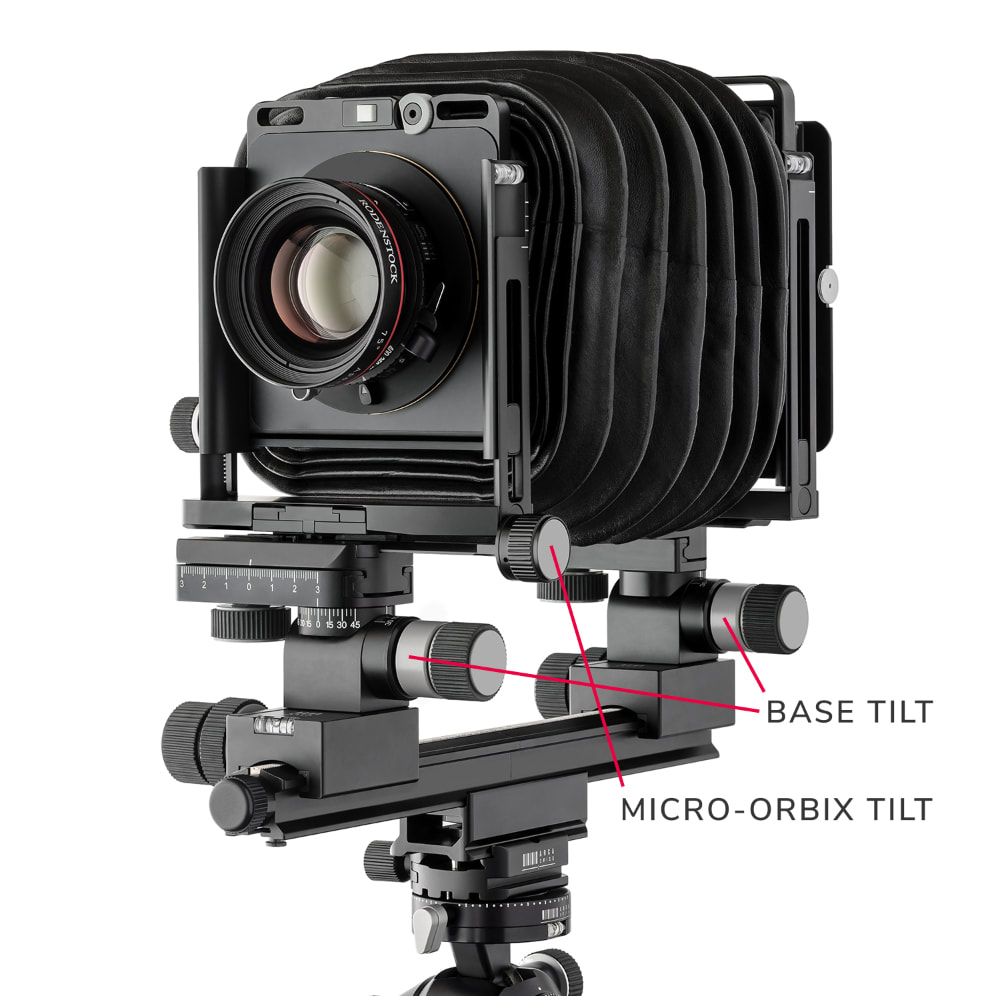 ARCA-SWISS F-Metric Field 4X5 View Camera with Micro-Orbix ARCA-SWISS F-Metric Field 4X5 View Camera with Micro-Orbix Micro-Orbix is installed into the lower front frame, and uses a gear driven knob to adjust tilt in micro increments with detents every 2.5 degrees. The precision of the geared movement provides an indispensable feature that can set very small tilt angles required for wide-angle lenses, or digital backs and DSLR cameras with small sensors. Unlocking or locking of the mechanism is not required, as the Micro-Orbix control is self-locking and requires only your left hand to operate. Micro-Orbix is adjusted using the same method as BASE TILT -- focus for the far subject and tilt for the near subject. This can be done quickly with the right hand focusing and the left hand controlling Micro-Orbix tilt.
If you'd like more information about ARCA-SWISS view cameras or tripod heads, please get in touch. I can demonstrate locally in the Phoenix metro area or online by Zoom or Skype conference by appointment. Manufacture of the Copal leaf shutter began in 1946, by the Copal Company in Japan. It was the standard mechanical shutter used by Rodenstock, Schneider, Fuji and Nikon for their large format lenses. The Copal Company ceased production in 2016, but supply remained available over the next few years. Today, a used lens with a Copal shutter is the most economical large format lens option available. Existing Copal shutters can still be reliable and durable when cared for in transport and operation. At this time, Copal shutters on large format lenses can be replaced with a shutter from another lens, or repaired in the USA at SK Grimes or other repair stations. If you need to replace a shutter, the aperture scales can be transferred to the new shutter or SK Grimes can make new aperture scales at an additional charge. Rodenstock's supply of remaining Copal shutters ran out in 2019. Since then, Rodenstock has not produced a lens with a mechanical shutter option. During 2019, Rodenstock replaced the mechanical Copal shutter with a new Aperture-Only (AO) or Aperture-Stop mount. Phase One has the newer X-Shutter to which existing lenses can be remounted, but the control of the shutter currently works only with their IQ4 digital backs. Additionally, Arca-Swiss can now offer lenses mounted in X-Shutter. Caring for Copal and other leaf or central point shutters
ARCA-SWISS QuickLink Set is a quick release system that combines a breach mount receiver for the tripod legs paired with a tripod head connecting plate. Attaching and removing a tripod head from tripod legs is fast and easy with QuickLink. Once installed, QuickLink components should remain in place for fast setup and swapping tripod heads on your tripod. For safekeeping and protecting your gear, we always recommend removing your tripod head and packing it away in your camera bag when traveling between locations. ARCA-SWISS QuickLink Set 802320 includes: 1x receiver base 3/8" 1x tripod head disk 3/8" Additional QuickLink tripod head plates or receiver bases may be purchased separately: 802320.1 - QuickLink tripod head disk only 802320.2 - QuickLink receiver base only INSTALLATION Before installation, separate the head disk from the base receiver. If you have difficulty, jump to the troubleshooting area below. Thread the QuickLink base receiver to the top of your tripod. Tighten it as much as possible. Using the smaller supplied allen wrench, tighten the small “anti-twist” set screw (inside the receiver base) until snug. Do not over tighten the small anti-twist screw or you will risk warping the receiver base, tripod mounting plate, or strip the set screw which may inhibit proper operation. Next, attach the QuickLink head connecting plate to the base of your tripod head using the large supplied allen wrench. Tighten it as much as possible. Using the smaller supplied allen wrench, tighten the small “anti-twist” set screw just until snug. Do not over tighten it or you will risk warping the tripod head base or the set screw which may inhibit proper operation. Once both components are mounted, rotate the receiver locking ring to align the three flanges on the tripod head disk with the receiver flange cutouts. When the silver pins are visible in the receiver base flange cutouts, the head disk may be mounted or unlinked. Note this position in the photo below. To mount - Turn the locking ring to reveal the silver stop pins in the flange cutouts. Align the tripod head disk flanges to align with the receiver flange cutouts. Drop the tripod head into the tripod receiver. To lock - Rotate the locking ring clockwise until snug. To unlink - Turn the locking ring counterclockwise until it stops. Lift the tripod head to remove it from the QuickLink receiver. In use - The QuickLink tripod head disk should be left on the tripod head for quick mounting. The QuickLink receiver base should remain attached to the tripod legs for travel. Protect your tripod head with a neoprene cover and transport in your camera bag, rolling case or backpack. Troubleshooting If you cannot separate the two QuickLink components before installation Hold the QuickLink set with your thumb on the bottom of the receiver, and your index and middle finger on each side of the 3/8ths screw on top of the head disk. Squeeze both components together firmly. With your opposite hand, rotate the locking ring on the outside of the receiver counter-clockwise until the three flanges on the head disk align with the cutouts on the receiver. The silver pins in the flange cutouts will be visible. Grab the 3/8ths screw of the tripod head disk and lift the disk up and out of the receiver. If the knurled locking ring does not stop Locate the small Phillips screw in the knurled locking ring. This screw may be tightened, but only until snug. Do not over tighten this screw or you may inhibit proper operation!
|
AuthorRod Klukas Archives
December 2023
Categories
All
|
||||||||||||
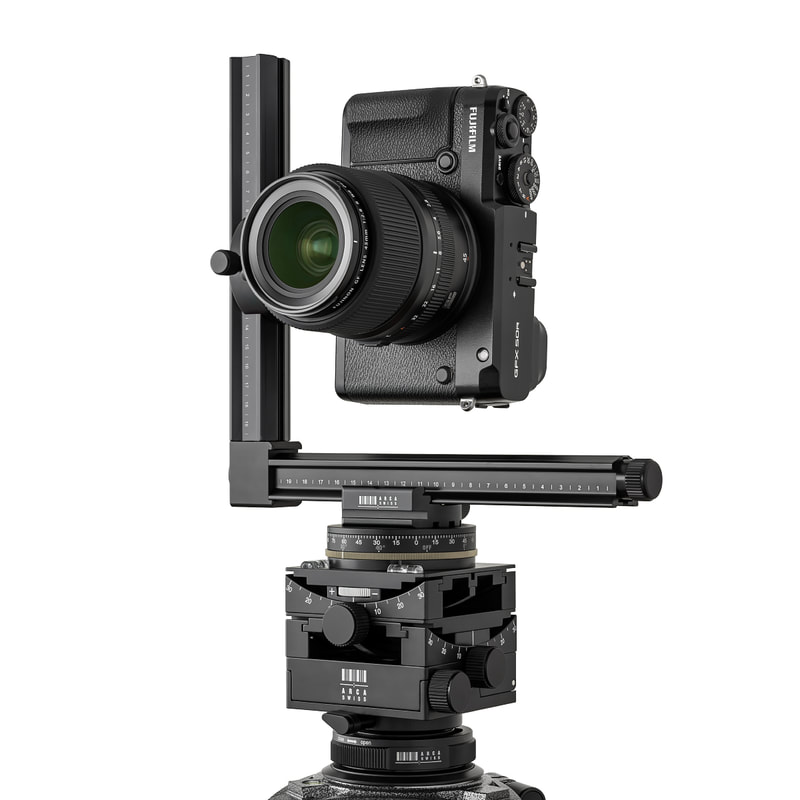
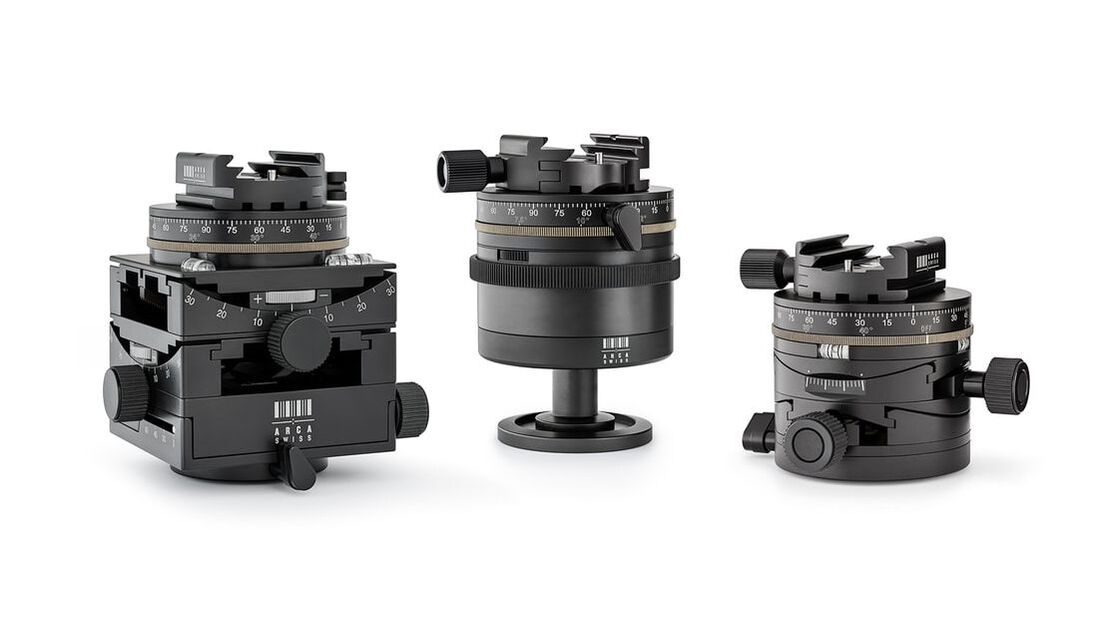
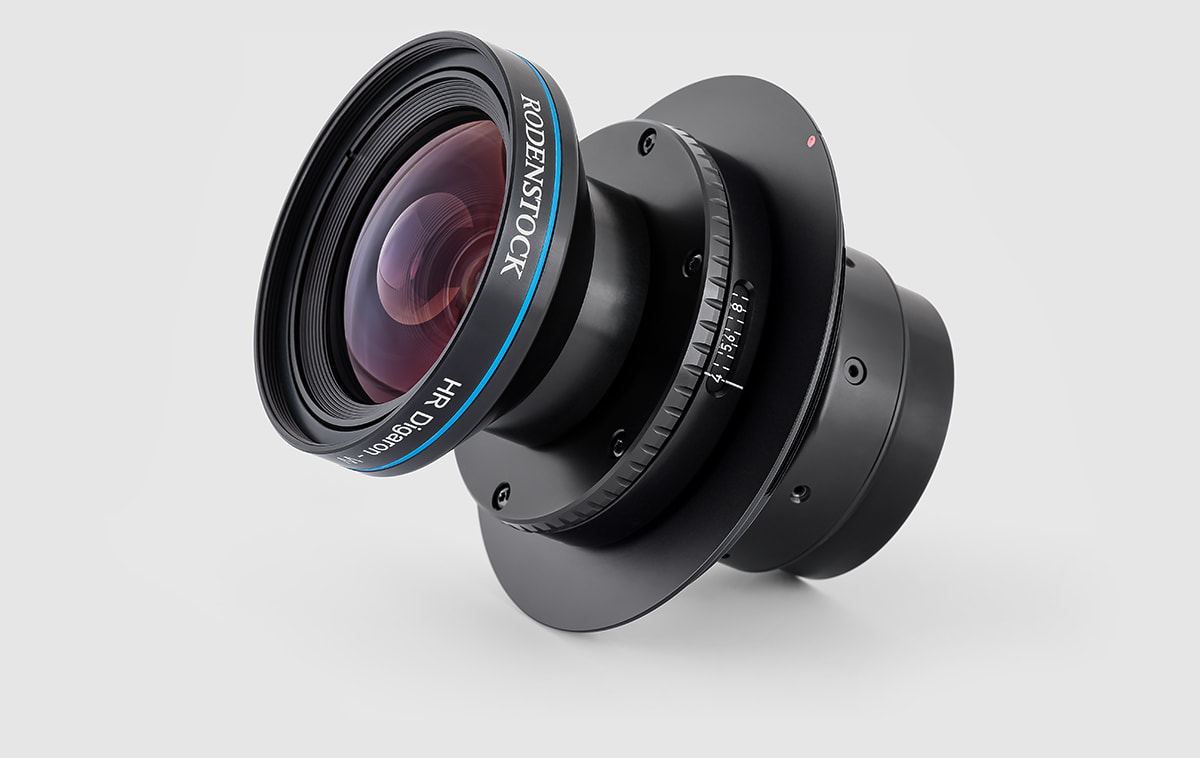
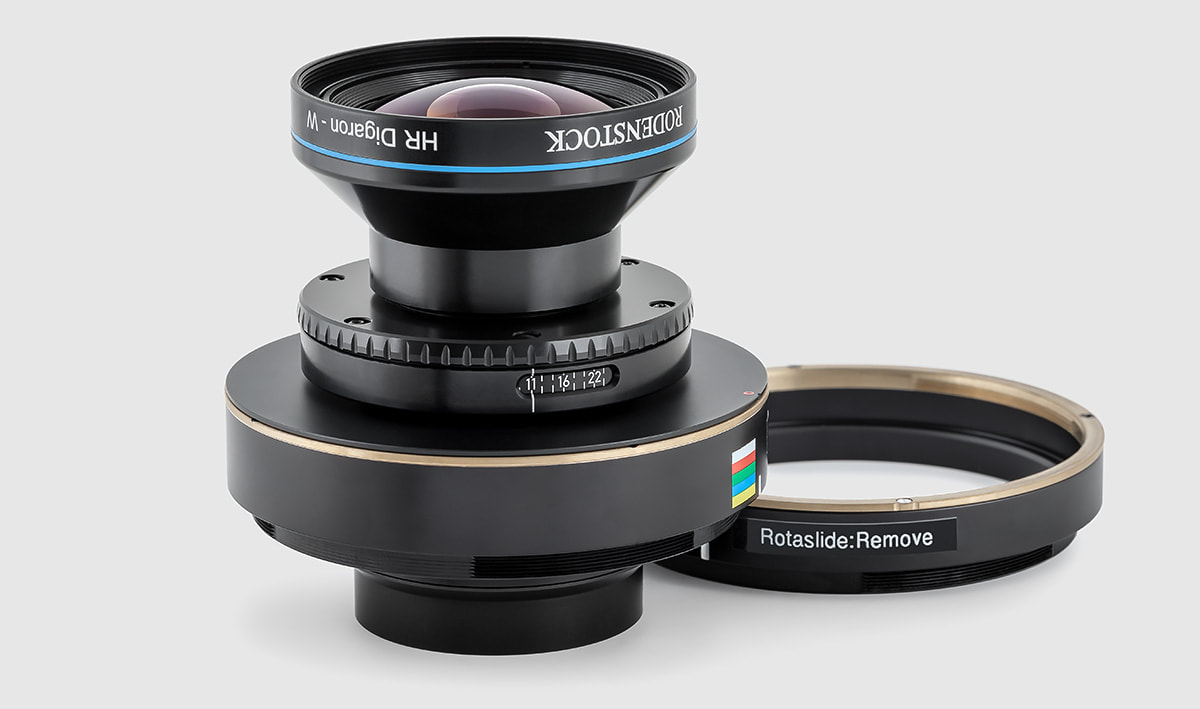

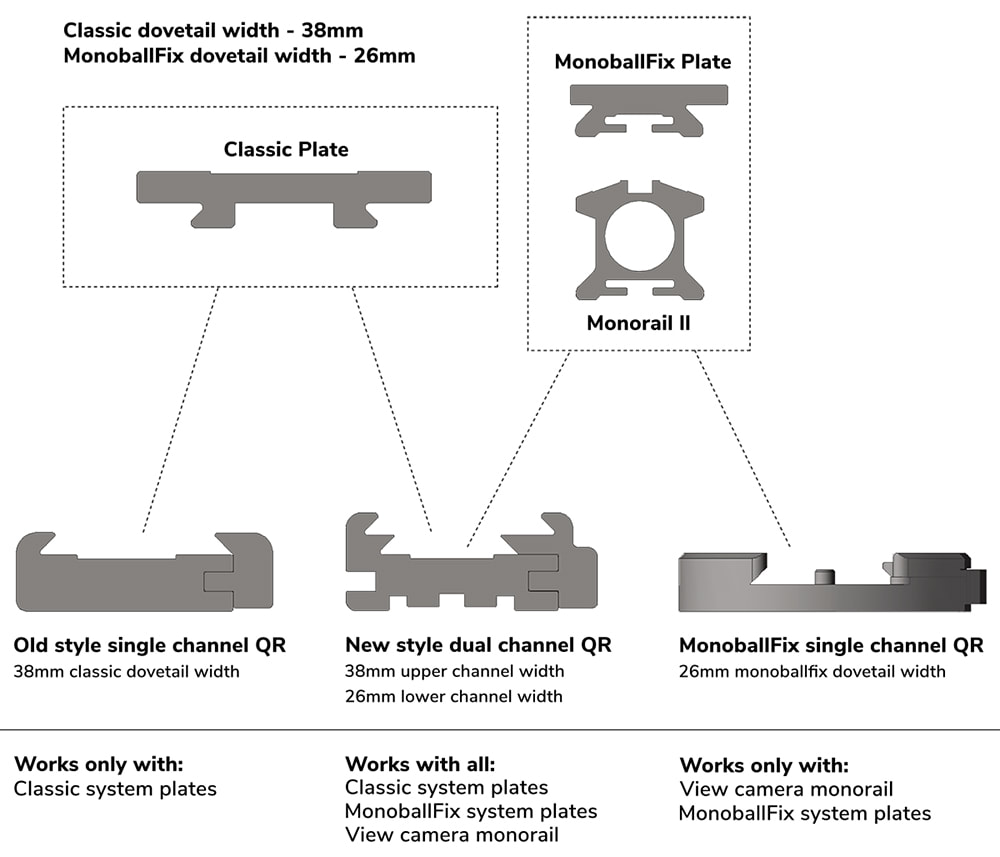
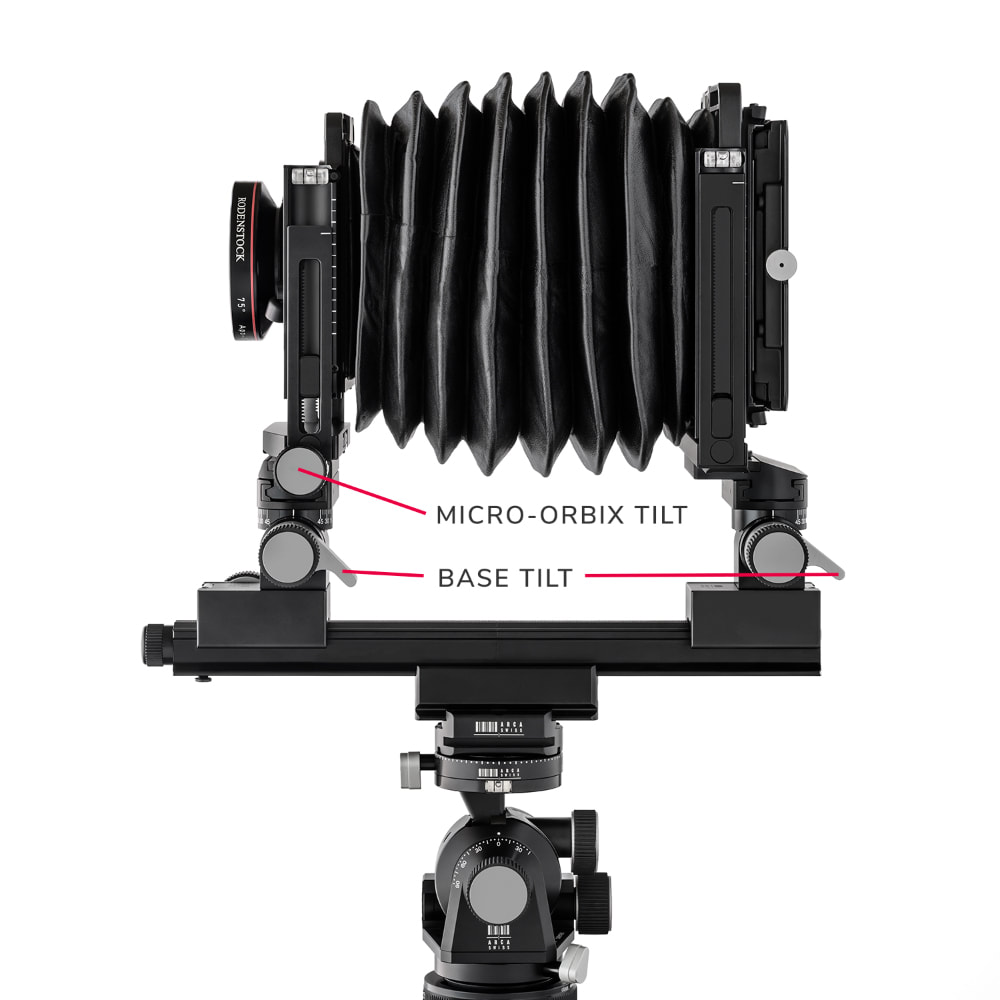
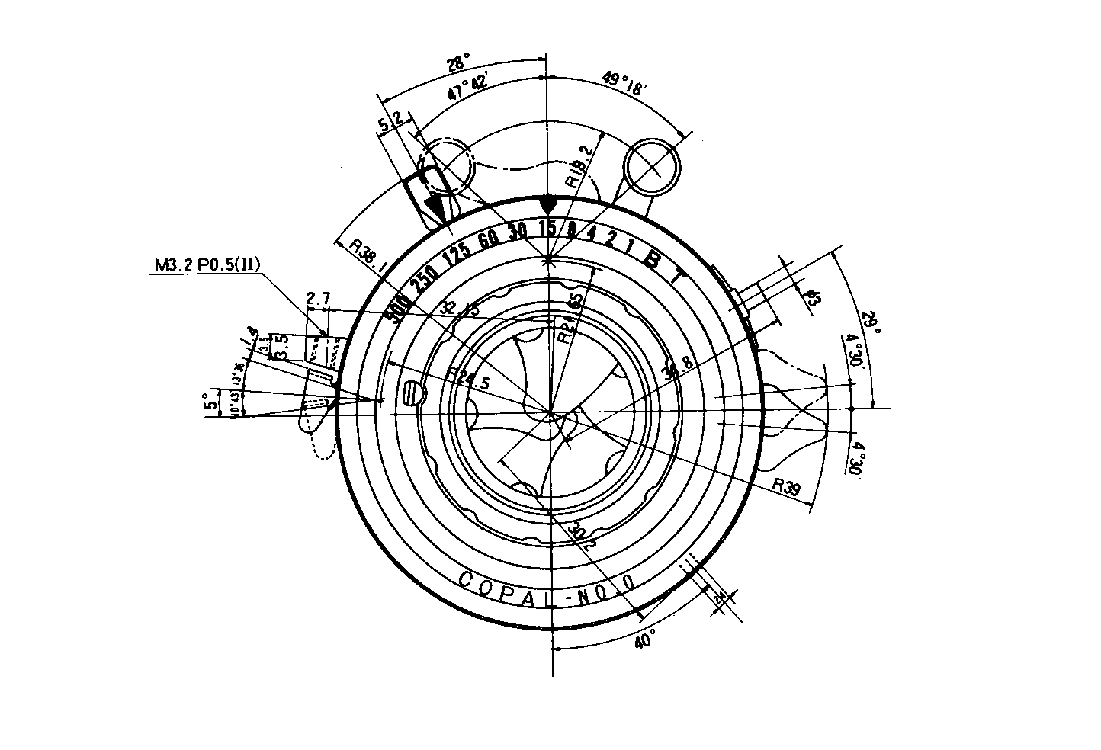
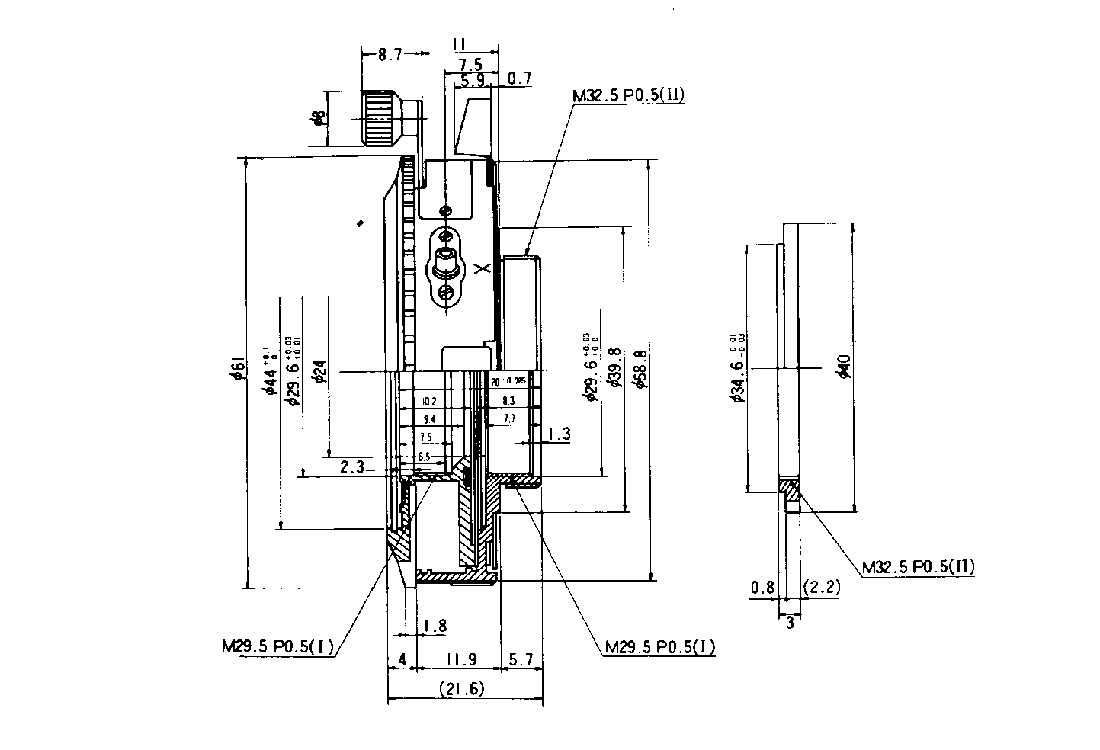
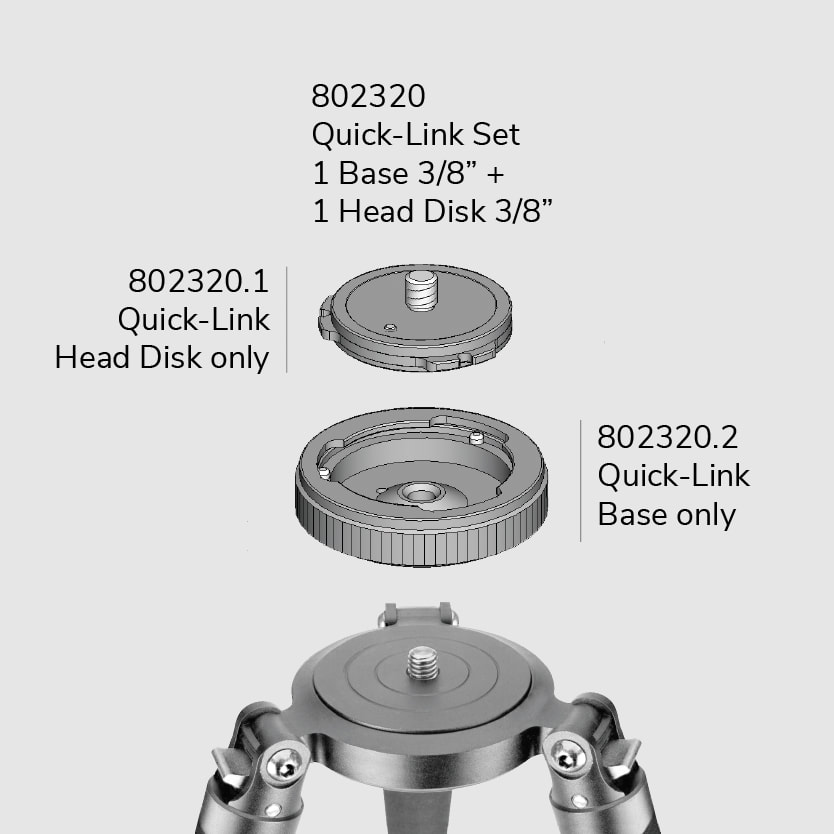
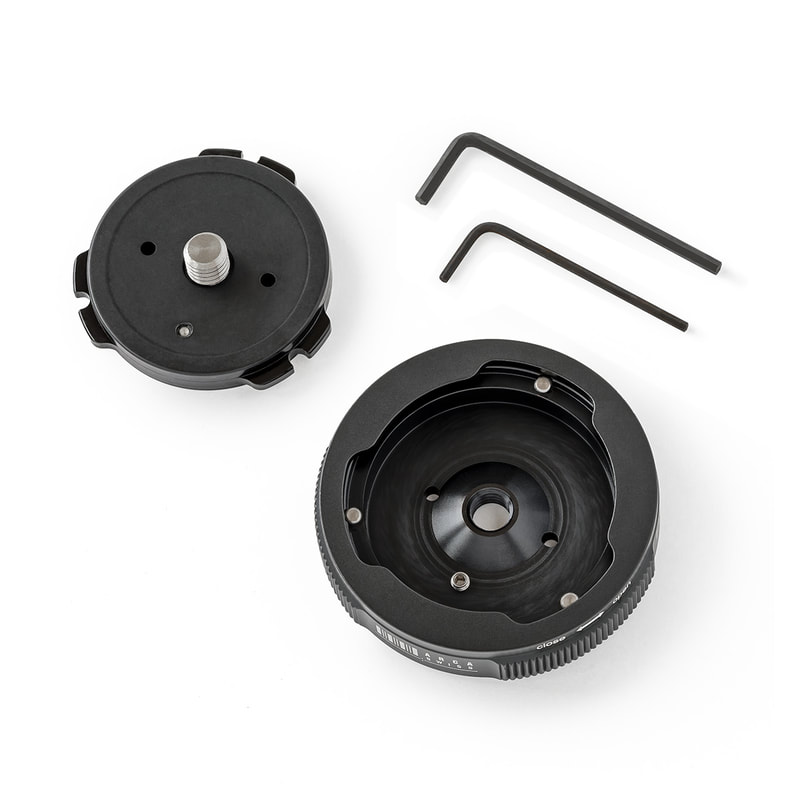
 RSS Feed
RSS Feed